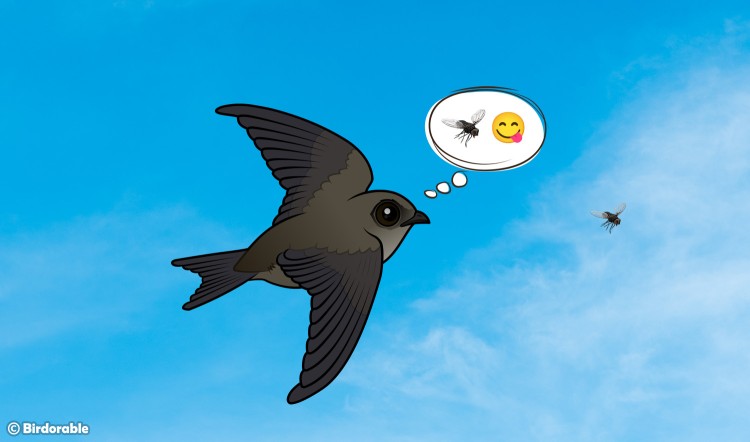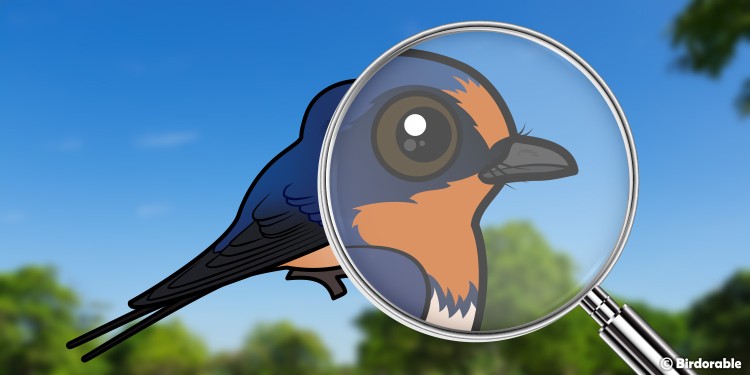Swallow Week 2024: Glossary
Swallow Family Glossary: Terms to Help Understanding Swallows
As our week-long celebration of Swallows continues here on the Birdorable blog, we're sharing a glossary of terms related to the family Hirundinidae. Understanding these related terms will help with your understanding of the unique birds in this fascinating cosmopolitan family of insect-feeding birds.

Chimney Swifts are aerial insectivores, catching insects in flight.
Aerial Insectivores
Birds that catch insects in flight, a category that prominently includes swallows.
Apus
A genus of birds in the swift family, often confused with swallows due to their similar appearance and flight patterns. Swifts and swallows are, however, different in their wing structure and nesting habits.
Brood Parasitism
A behavior where a bird lays its eggs in the nests of other birds, relying on them to raise their young. Brood parasitism does not only involve mixed species; in their communal nesting colonies, Cliff Swallows have been observed laying eggs in other Cliff Swallow nests.
Diurnal Migration
The pattern of migrating during the day. Swallows, being diurnal, migrate during the day, utilizing the daylight hours for feeding on insects as they move.
Gape
The wide opening of a bird's mouth, often significantly large in aerial insectivores to facilitate easy feeding.
Hawking
A feeding strategy where birds catch insects in mid-air. Swallows are expert hawkers, gracefully capturing prey during flight with precision.
Hirundinidae
The scientific family name for swallows, from Latin, which encompasses various species of swallows, saw-wings, and martins.
Rictal Bristles
Stiff feather structures around the base of the beak, thought to aid in sensing and catching insects mid-flight. Rictal bristles are present in several aerial insectivorous species, including the swallows, saw-wings, and martins. Rictal bristles are also notable in nighthawks, swifts, and flycatchers -- all specialist aerial insectivores.

Rictal bristles are stiff feathers around the base of the beak to aid in sensing and catching insects mid-flight.
Roost
A place where birds gather to rest or sleep. Swallows can form large roosts during migration periods. Unlike many birds that might roost solitarily or in small family groups, swallows gather in large numbers at roosting sites.
Trans-Saharan Migrants
Refers to birds, including some swallows, that migrate across the Sahara Desert to reach their breeding or wintering grounds.
Zugunruhe
A German term used in ornithology to describe the increased restlessness in migratory birds, including swallows, as the migration season approaches.





Comments
Leave a comment
Thank you!